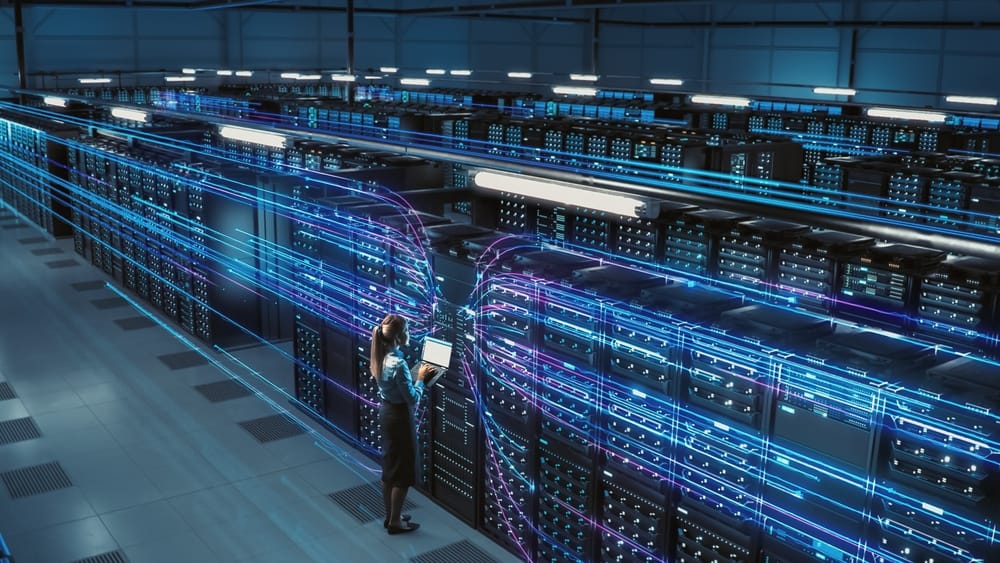Curious about what a hyperscale data center definition is? You are in the right place! Hyperscale data centers are massive facilities that power everything from streaming services to AI applications. As businesses move more operations to the cloud and demand for computing power increases, these centers play an important role in our digital world.
This blog will explore what hyperscale data centers are, how they work, and their importance in shaping modern technology. Whether you’re an IT expert or just curious, you’ll learn how these centers make our online experiences possible.
What Is a Hyperscale Data Center?
A hyperscale data center is a large, specialized facility built to support massive data and applications, ensuring services run smoothly. These data centers are used by major tech companies like Google, Amazon, Facebook, and Microsoft to power their digital services reliably and efficiently.
Differences Between Hyperscale and Traditional Data Centers
Hyperscale data centers and traditional data centers are different in several ways:
- Size: Hyperscale data centers are much larger, with over 5,000 servers and lots of space. Traditional data centers are smaller, with fewer servers and less space.
- Scalability: Hyperscale data centers can grow quickly to handle a lot of data, which is great for companies that need to expand fast. Traditional data centers can’t grow as quickly or easily.
- Automation: Hyperscale data centers use a lot of automation to run smoothly with little human help. Traditional data centers rely more on people to manage and maintain the systems.
- Energy Efficiency: Hyperscale data centers are built to use energy wisely, often relying on clean energy sources like solar or wind. Traditional data centers may not focus as much on energy-saving practices.
Hyperscale data centers are larger, more automated, scalable, and energy-efficient, while traditional data centers are smaller, less scalable, and require more manual work.
Core Characteristics of Hyperscale Data Centers
- Massive Scale: These data centers house thousands of servers and large storage systems.
- Automation: Automated systems handle tasks such as monitoring, maintenance, and resource management, minimizing the need for manual work.
- Scalability: They are easily expandable to meet growing data and processing demands.
Hyperscale data centers are crucial for powering modern digital services. They are designed with scalability, automation, and energy efficiency in mind, making them key to supporting the growing demands of the digital world.
Key Features of Hyperscale Data Centers
Hyperscale data centers are large facilities designed to handle huge amounts of data and support the needs of major tech companies like Google, Amazon, and Facebook.
-
Modular Architecture and Rapid Scalability
These data centers are designed to be flexible, allowing them to expand quickly. When more servers or storage are needed, they can be added easily to meet growing demand.
-
Software-Defined Infrastructure
Hyperscale data centers use software to control networks and storage. This makes them more flexible and easier to scale, as software helps manage resources efficiently.
-
Energy Efficiency and Cooling Innovations
Hyperscale data centers use advanced cooling and energy-saving technologies to reduce energy use and minimize environmental impact.
-
High Availability and Redundancy
Hyperscale data centers use backup systems, failover mechanisms, and data replication to keep services running smoothly, even during disruptions.
Hyperscale data centers are built for handling large-scale data tasks with efficient systems, quick expansion, and minimal downtime, supporting the vast data needs of modern digital services.
Why Hyperscale Data Centers Are Important
Hyperscale data centers are large, powerful facilities that support key digital services like cloud computing, AI, big data analytics, and IoT. They power major cloud platforms such as AWS, Google Cloud, and Microsoft Azure, offering scalable and reliable services globally.
These centers are built to manage large volumes of data with thousands of servers, fast networking, and extensive storage, all efficiently controlled by software and automation. They also use advanced cooling and power systems to maintain optimal performance.
Hyperscale data centers are the backbone of modern digital infrastructure, enabling smooth operations of cloud services, AI technologies, and connected devices that power our daily lives.
Real-World Examples
Hyperscale data centers are massive facilities that support the digital operations of major tech companies by handling large-scale workloads. These centers provide the necessary computing power, storage, and networking capabilities for various applications.
Major Companies Operating Hyperscale Data Centers:
Leading tech companies rely on hyperscale data centers:
- Amazon Web Services (AWS): Provides cloud computing services worldwide.
- Microsoft Azure: Delivers computing, analytics, and storage through hyperscale data centers.
- Google Cloud: Powers services like Google Search, Gmail, and YouTube.
- Meta (Facebook): Supports social media platforms and other services.
- Apple: Manages services like iCloud and Apple Music.
- Alibaba Cloud: Offers cloud services across Asia and globally.
- Tencent: Supports its cloud services with hyperscale data centers.
- IBM: Powers cloud and AI services through hyperscale data centers.
- Oracle: Runs its cloud services with hyperscale data centers.
- ByteDance (TikTok): Uses hyperscale data centers to support TikTok.
Hyperscale data centers are crucial for the efficient operation of major tech companies, enabling different services across different industries.
Benefits to Businesses and Users
Hyperscale data centers are large facilities that process massive amounts of data, supporting the growing demand for services like cloud computing and AI.
- Scalability: Easily handle high demand, ensuring reliable performance.
- Cost Efficiency: Optimized resources help lower operational costs.
- Improved Performance and Reliability: Better infrastructure leads to faster, more reliable services.
- Enhanced Security and Compliance: Strong security measures protect data and ensure regulatory compliance.
Hyperscale data centers are critical for modern digital services. They offer scalable, efficient, and secure infrastructure to support technologies like cloud computing, AI, and more.
Challenges and Considerations
Hyperscale data centers face several challenges that impact their operations and the overall digital infrastructure:
- High Energy Consumption and Environmental Impact
Hyperscale data centers use a large amount of electricity, contributing to higher carbon emissions. In 2022, they consumed 460 terawatt-hours (TWh), about 2% of global electricity, with this expected to double by 2026.
- Security Risks and Data Sovereignty
Due to the large amounts of sensitive data stored, hyperscale data centers are prime targets for cyberattacks, data breaches, and physical security threats. Strong security measures are essential to protect this valuable information.
- Physical Space and Geographic Location Planning
Picking the right location for data centers is very important. Factors like access to energy, weather, and how close the center is to users all matter. If the location isn’t ideal, it can lead to higher costs and lower efficiency.
To overcome these challenges, solutions like using renewable energy, adopting advanced cooling technologies, and careful site selection are important for the sustainability and security of hyperscale data centers.































